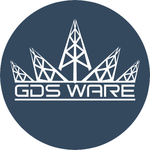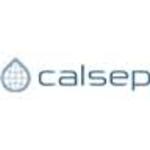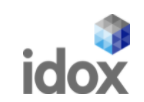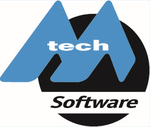What Is Oil And Gas Software?
Oil and gas software is a sort of technology that helps oil and gas firms manage and streamline their operations. It includes a diverse set of software solutions that may be utilized for a variety of operations, including exploration, drilling, production, transportation, and distribution of oil and gas products. Oil and gas software is designed to increase the efficiency and accuracy of data handling.
It uses complex data analytics techniques to collect, analyze, and evaluate data from a variety of sources, including sensors, meters, and other devices. This enables organizations to make more informed decisions and optimise their operations for improved results. Another important part of oil and gas software is risk management. In such a complicated and high-risk business, it is critical to have tools for identifying possible dangers and implementing preventative actions.
Many software systems include risk assessment and monitoring functions to assist businesses in mitigating risks and ensuring compliance with safety standards. Oil and gas software can be integrated with other enterprise systems, such as accounting and supply chain management software, to provide a more complete picture of business activities. This improves departmental coordination and decision-making.
In addition to these basic elements, oil and gas software may include specialist modules for specific activities like asset management, well production monitoring, and environmental compliance. This makes it a versatile and customizable tool that can meet the specific needs of each firm. When searching for oil and gas software, it is critical to examine issues such as compatibility with existing systems, scalability, and usability. The appropriate software may help businesses cut expenses, boost productivity, and remain competitive in a constantly changing sector.
What Are The Recent Trends In Oil And Gas Software?
Oil and gas companies must constantly adapt to a fast evolving market, and software plays an important role in streamlining processes and enhancing efficiency. As the globe becomes more digitalized, there is a greater demand for smart oil and gas software.
In this buyer's guide, we'll look at the latest developments in oil and gas software to help you make an informed purchase decision.
1. Cloud-Based Solutions: One of the most significant trends in oil and gas software is the migration to cloud-based solutions. With the growing demand for remote access, cloud-based software enables seamless collaboration and accessibility from anywhere. This not only lowers infrastructure expenses, but also gives real-time data and analytics, which improve decision-making processes.
2. IoT Integration: Oil and gas firms are implementing IoT technology in their operations, and software providers are following suit. IoT sensors can collect and transfer data, allowing real-time monitoring of equipment, pipelines, and wells. This data can then be sent into software for analysis and predictive maintenance, resulting in cost savings and increased safety.
3. Artificial Intelligence (AI): Artificial intelligence is revolutionizing the oil and gas business, and software is no exception. AI algorithms enable software to examine massive volumes of data and uncover patterns and anomalies that people may overlook. This enables businesses to maximize productivity, reduce downtime, and increase safety.
4. Mobile Applications: Mobile applications are becoming more popular in the oil and gas business, and software developers are working to create mobile-friendly solutions. With the bulk of field operations taking place remotely, mobile apps allow workers to easily access crucial data, job schedules, and workflows, increasing efficiency and productivity.
5. Data Analytics: Data analytics is becoming an important part of oil and gas software. With so much data being generated by IoT devices and other sources, analytics solutions can help businesses make sense of it all. Companies can use data analysis to make more informed decisions, optimize processes, and cut expenses.
Benefits Of Using Oil And Gas Software
Oil and gas firms operate in a complex and dynamic industry that presents several challenges and hazards. In order to remain competitive and efficient, these businesses must rely on innovative and specialized software. Oil and gas software is specifically built to satisfy the industry's unique needs and demands, providing numerous benefits that assist streamline operations, decrease costs, and improve overall performance.
One of the primary advantages of employing oil and gas software is enhanced efficiency. Routine tasks like data collection, processing, and reporting can be completed in a fraction of the time it would take if done manually. This saves time while simultaneously reducing the chance of human error, ensuring data quality and reliability. Furthermore, oil and gas software offers real-time data and insights, enabling businesses to make faster and more informed decisions.
Businesses can use advanced analytics and predictive technologies to identify possible hazards and opportunities, enhance production and operations, and boost overall performance. This not only increases production, but also helps businesses stay ahead of the competition. Oil and gas software also provides better safety and compliance features. Companies can utilize these solutions to guarantee that all processes and operations comply with industry standards and laws.
This reduces the likelihood of accidents and other safety issues while also avoiding costly penalties and fines. Furthermore, oil and gas software can help teams and departments collaborate and communicate more effectively. A centralized database and real-time data access allow all necessary parties to access the same information, resulting in improved coordination and decision-making. Another big advantage of utilizing oil and gas software is cost reduction.
Companies that automate procedures and streamline operations can cut operational expenses and enhance overall efficiency, resulting in considerable long-term cost savings. Furthermore, the reliable data and insights supplied by these solutions can help businesses identify areas for improvement and potential cost-cutting strategies. Finally, oil and gas software provides scalability and flexibility to meet the industry's continually changing needs. These solutions are easily adaptable to new technologies, processes, and regulations, ensuring that a company's operations and systems remain up to date.
Important Factors To Consider While Purchasing Oil And Gas Software?
When acquiring oil and gas software, it is critical to thoroughly assess all elements to ensure that you are making the best investment for your company.
Here are some important factors to consider when selecting oil and gas software:
1. Industry-Specific Functionality: The first and most important consideration is the software's capacity to meet the oil and gas industry's unique needs and processes. The software should have features and technologies specialized to this industry, such as well and rig management, production optimization, and asset tracking.
2. Scalability: Because the oil and gas sector is continuously changing, it is critical to select software that can adapt and develop alongside your company. Look for a solution that is scalable and can meet the future demands and complexities of your business.
3. Integration Capabilities: Your chosen software should be able to work easily with your existing systems, such as accounting, ERP, or data management software. This will ensure smooth data flow and prevent disruptions or duplication in your procedures.
4. User-Friendly Interface: An easy-to-use interface is critical for software uptake and efficiency. It should be user-friendly, visually appealing, and have customized dashboards for rapid access to important information.
5. Cloud-Based vs. On-Premise: Determine whether a cloud-based or on-premise solution is best suited to your business needs. Cloud-based software has the advantage of remote access, automatic upgrades, and reduced initial expenses, whereas on-premise software provides more control and customization choices.
6. Security And Compliance: With sensitive data and stringent business rules, it is critical to select software that provides strong security features and complies with industry standards such as HIPAA and ISO.
7. Customer Support And Training: Ensure that the software provider provides dependable technical assistance and training to assist you and your team in efficiently using the software and troubleshooting any issues that may emerge.
8. Cost Versus ROI: Last but not least, examine the software's pricing and the potential return on investment for your firm. Look for software that strikes a balance between cost and value, with features and functionalities that can assist optimize your processes, increasing productivity and profitability. By carefully evaluating these elements, you can make an informed decision when selecting oil and gas software that suits your individual business demands and can assist you in achieving your industry objectives.
What Are The Key Features To Look For In Oil And Gas Software?
When choosing the best oil and gas software for your company, it is critical to evaluate a number of crucial aspects that will fulfill your specific requirements and increase operational efficiency.
The following are the main features to look for while assessing oil and gas software:
1. Industry-Specific Functionality: Oil and gas businesses have unique workflows and processes that necessitate specialist software. Look for a software package that is tailored to the oil and gas business, including capabilities like land management, well production tracking, and accounting.
2. Real-Time Data Management: Given the complexities of oil and gas operations, your software must provide real-time data management. This tool allows you to make faster, more informed decisions based on current data, increasing operational efficiency and lowering the chance of errors.
3. Cloud-Based Platform: The oil and gas business frequently involves remote and off-site operations, making it critical to have a software solution that can be accessed from anywhere. A cloud-based platform enables seamless collaboration and remote access to your data, ensuring that your team is always connected and operations function efficiently.
4. Integration Capabilities: Look for oil and gas software that can work with your current systems, such as accounting and ERP. This will streamline your procedures by eliminating the need for manual data entry, saving you time and lowering the risk of errors.
5. Comprehensive Reporting: As a buyer, you must be able to monitor the status of your business and make educated judgments. Look for software with configurable, real-time reporting and analytics features that will provide you with useful insights and data to help you achieve your business goals.
6. Mobile Accessibility: With the increasing use of mobile devices, having a software solution that is accessible on the go is essential. Look for software that includes a mobile app or a responsive design that allows you to access your data and complete tasks from any device, assuring productivity even when you're not in the office. Consider these essential aspects when searching for oil and gas software to select a solution that suits your specific business objectives, enhances operational efficiency, and helps you stay ahead of the competition.
Why Do Businesses Need Oil And Gas Software?
Businesses in the oil and gas business are continually confronted with a slew of complicated and evolving difficulties. The oil and gas business demands efficient and effective solutions to manage large amounts of data, streamline processes, and ensure compliance with industry laws. This is where the oil and gas software comes in. These specialized software applications have been specifically built to meet the industry's unique needs, providing comprehensive solutions to assist organizations in overcoming operational obstacles and achieving their goals.
One of the primary reasons firms want oil and gas software is to efficiently handle the massive amounts of data generated and collected in the industry. This can include information about production, the supply chain, equipment, and maintenance, among other things. Companies can use software to collect, organize, and analyze data in real time, offering useful insights for decision making and finding areas for development.
In addition to data management, oil and gas software helps organizations streamline their procedures. These programs provide automation and integration capabilities, which eliminate the need for manual labor and reduce the likelihood of errors. This not only improves efficiency, but also saves time and resources, allowing organizations to focus on more vital duties. Furthermore, the oil and gas industry is extensively regulated, and enterprises must comply with a variety of rules and regulations.
Oil and gas software can assist organizations in meeting these compliance requirements by tracking and managing critical data, deadlines, and ensuring right procedures are followed. Beyond these fundamental benefits, oil and gas software includes capabilities such as asset management, risk assessment, and forecasting, among others, making it a complete solution for enterprises in this industry. It not only aids in day-to-day operations, but also offers essential insights and tools for long-term planning and strategic decision making.
How Much Time Is Required To Implement Oil And Gas Software?
The implementation timeframe for oil and gas software varies depending on a number of factors, including your organization's size and complexity, the software's unique features and functionalities, and the level of customization necessary. On average, it can take between a few weeks and several months to fully integrate and implement the software into your company's processes.
One of the first phases in the implementation process is to do a thorough analysis of your existing systems and processes to identify how the software may be best integrated. This may entail collaborating closely with a team of software professionals and consultants to identify possible areas for improvement and create a plan for implementation. Next, the program must be adjusted and tailored to fit your specific business requirements.
This can include importing data from current systems, creating workflows and automations, and teaching people how to utilize the software efficiently. Once configured and tested, the software will be ready for deployment. The duration of this stage may differ based on the size of your organization and the complexity of your workflows. During this period, it is critical that all users be adequately taught and acquainted with the new program.
Finally, the program will be fully incorporated into your organization's daily activities. There may still be some minor tweaks and fine-tuning to be done, but with good training and assistance, your team should be able to maximize the software's capabilities. It is vital to note that the implementation process does not finish with the software's deployment. Ongoing support and maintenance are critical to the software's long-term success and efficiency. Some vendors may include continuous support and training as part of their services, while others may need an additional price.
What Is The Level Of Customization Available In Oil And Gas Software?
When picking oil and gas software, customization is an important factor to consider. Every organization in the industry has distinct business processes and workflows, therefore a one-size-fits-all solution may not meet all of their requirements. Thus, it is critical to grasp the level of flexibility accessible in various software solutions. Most oil and gas software companies provide varied amounts of customisation based on the product's complexity and the buyer's requirements.
There are three levels of customization: basic, advanced, and fully personalized. Basic customization allows users to make modest modifications to the software, such as adding corporate logos or changing specific areas to better suit their workflow. This level is typically found in off-the-shelf software and requires no coding or technical knowledge. Advanced customization provides a broader range of customization possibilities, such as developing new modules and integrating third-party apps.
This level may necessitate some coding or technical skills, although most providers provide assistance and direction to help users reach their customisation objectives. Fully customized software is developed to meet the buyer's individual needs and business procedures. It requires substantial coordination between the software vendor and the buyer to create a customized solution.
This level provides the most flexibility and enables businesses to create a software solution that is completely aligned with their operations. It is important to remember that the level of customisation offered may vary depending on the program type, such as enterprise resource planning (ERP), customer relationship management (CRM), or project management. ERP software, for example, provides a greater level of flexibility because it connects multiple company processes, but CRM software may provide less customization because it focuses solely on managing client interactions.
Which Industries Can Benefit The Most From Oil And Gas Software?
Oil and gas software has become an essential component of the energy business, providing a variety of solutions for streamlining operations and increasing efficiency. This software, which includes advanced capabilities like data management, automation, and analytics, can help a wide range of oil and gas companies.
Oil and gas software can benefit the following industries the most:
1. Upstream Sector: Oil and gas software can provide major benefits to the upstream sector, which includes oil and gas exploration and production. It aids with the management and analysis of large amounts of data acquired from numerous sources, including drills, wells, and reservoirs. This data can then be used to make informed decisions about the optimal drilling locations and production tactics, resulting in increased productivity and cost savings.
2. Midstream Sector: The midstream sector is in charge of delivering and storing crude oil and natural gas from the production facility to refineries and final consumers. Oil and gas software can help monitor and manage pipelines, gas processing facilities, and storage tanks, ensuring that operations run smoothly and efficiently. It also includes capabilities for scheduling and optimizing transportation routes, which reduces the likelihood of delays and unforeseen repairs.
3. Downstream Sector: The downstream sector manufactures and distributes refined oil and gas products such as gasoline, diesel, and other fuels. Oil and gas software allows organizations to monitor and optimize their refining processes, assuring the highest product quality while lowering operational expenses. It also allows for improved inventory management and supply chain logistics, which increases the downstream sector's total efficiency and profitability.
4. Oil Field Services: Oilfield service firms, which provide support and equipment for oil and gas exploration and production, can also reap significant benefits from employing oil and gas software. It aids in contract management, tracking equipment and workers, and improving resource allocation. This improves project management, increases safety, and decreases downtime, resulting in a significant boost in total production.
5. Renewable Energy: The renewable energy sector, which includes wind and solar energy, has complicated projects and operations that can benefit from oil and gas software. It includes project management, scheduling, and resource optimization capabilities to help you plan and execute renewable energy projects more efficiently. Furthermore, the analytical capabilities of this software can aid in discovering chances for additional cost savings and enhancing the sustainability of renewable energy projects. Overall, oil and gas software offers valuable solutions for data administration, project management, and process optimization across a variety of businesses in the oil and gas sector. By streamlining procedures and enhancing efficiency, businesses can save time and resources while increasing profits.
Conclusion
To summarize, selecting the best oil and gas software for your organization necessitates thorough analysis and research. It is critical to establish your specific sector requirements and goals, as well as your budget and level of technical competence. With so many options available on the market, it is critical to thoroughly evaluate each software's features, functions, and customer support before making a decision.
Some important considerations when assessing oil and gas software include its capacity to streamline operations, increase efficiency and productivity, and provide real-time data and analytics. It should also integrate seamlessly with existing technologies and allow for mobility in distant work environments. Furthermore, a dependable and recognized vendor with a proven track record in the oil and gas business can have a substantial impact on the success of your software deployment.
Following these guidelines and thoroughly analyzing options will allow you to make an informed selection and invest in the best oil and gas software for your company's specific needs. This will ultimately result in higher profitability, simpler operations, and better decision-making capabilities for your firm.






















